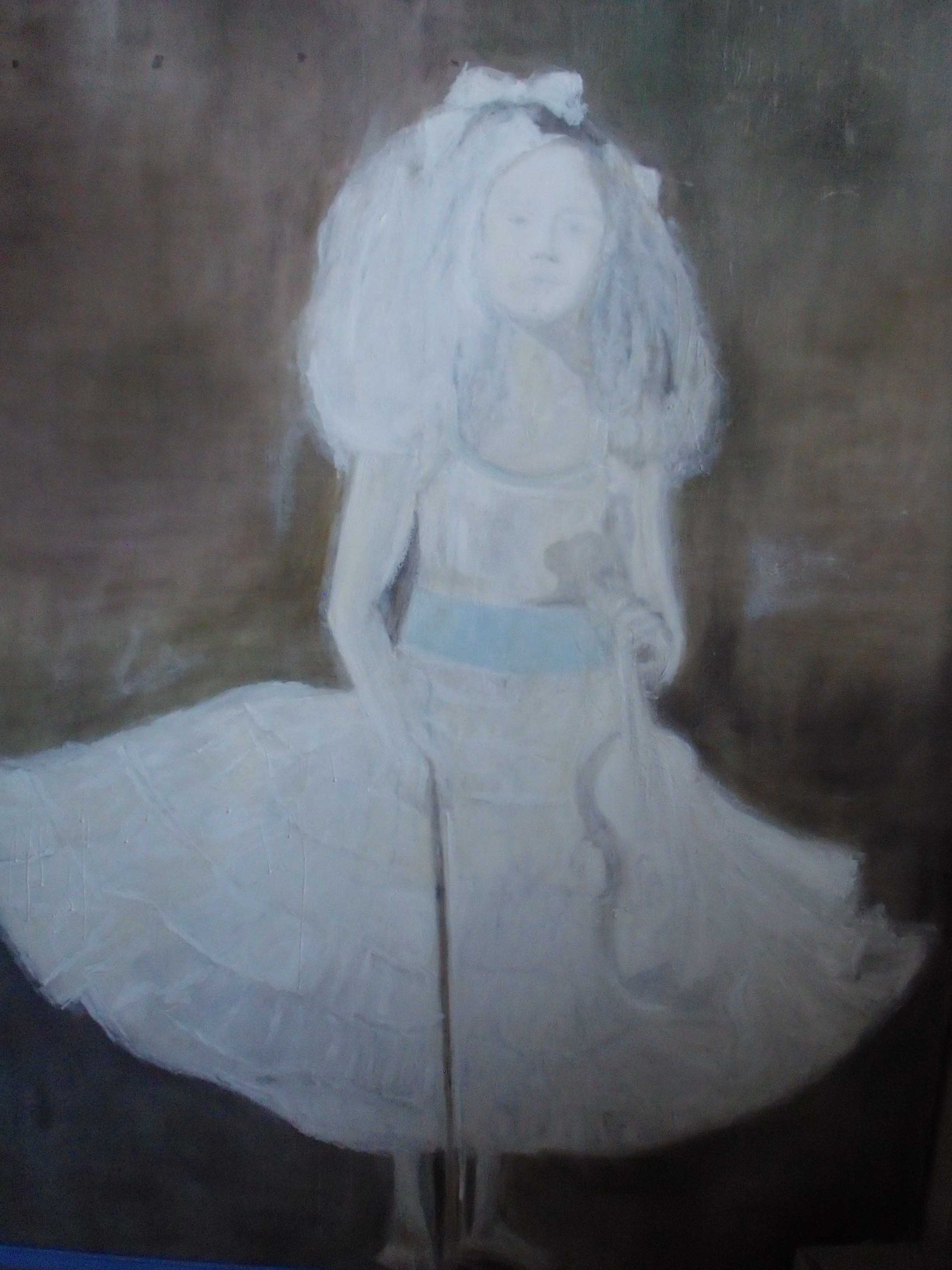Hoffmann, Nina


Born 1948 in Yugoslavia, lives in Berlin
Nina Hoffmann is a portrait painter, which is not very common today. Although portraits have a long history in Europe from the early Renaissance period to the beginning of the 20th century, modern art seems to have avoided portraits, especially after World War II. The representative function of art was so profoundly shaken, and portraits had fulfilled this function in particular. In addition, since the second half of the 19th century, the task of portrait art was taken over by photography. Who still has a portrait made with paint and a brush?
Nina Hoffmann does not directly produce portraits either. Her painted portraits are created from photographs that she finds in the press, or she photographs her subjects herself–such as her daughter and friends. She then transfers the photos onto a large canvas. In this way, she created a series of portraits of famous people, such as Michael Jackson or Kate Moss. She has made several portraits of this scandalous yet fragile looking model. The portraits focus mainly on the face and create a strong sense of vulnerability. The author achieves this by hiding the face
of the model behind sort of a veil of smudged colours and by her choice of materials: as opposed to ancient portrait painters depicting the deceased, she does not use wax colours. Her paintings produce an uncommon transparency.
Portraits of girls in nostalgic clothing are also common for Hoffmann, inspired by the photos of her daughter. One such portrait from 2006, entitled Kardinalette, shows a girl in a self-confident pose dressed in blue; the figure of the girl noticeably stands out from the empty background made only of greenish-brown colours. Her gaze is fixed in a provocative, even scornful manner. All elements are a reminder of Baroque portraits, not only the gaze, but also the posture of the body and the clothing. Rubens painted Maria de Medici in this way. As if the author wanted to comment on the age-old tradition of portrait painting with her own portraits and to ask the question: To what extent are such portraits still an expression of individuality? Are they only a social representation, where clothing, gestures, and facial expressions are more important than individuality? In Hoffmann’s portraits, the focus is always on the eyes. They draw the attention of the audience, perceptibly, as if they were caught in a layer of wistful colours. And it is the eyes that seize this unmistakable individuality and what make these portraits so unique.
